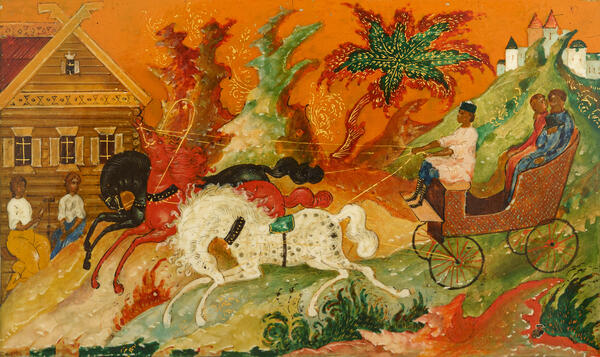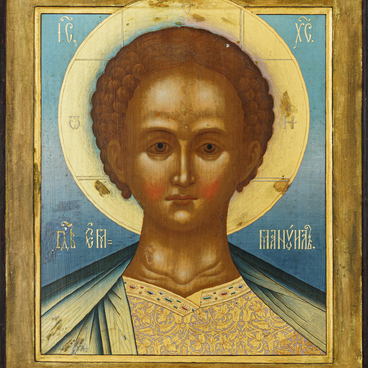Alexander Fyodorovich Kotyagin (1882–1943) was a Mstyora miniaturist, teacher and icon painter. From 1893 to 1897, he attended the Mstyora Icon Painting School, and then worked in icon painting workshops of Mstyora and Moscow.
Alexander Kotyagin painted churches and restored icons. He also proved himself as an organizer, becoming one of the founders of the artels “Ancient Russian Painting” and “Proletarian Art”. In 1932, Kotyagin also began teaching miniature painting at the Mstyora Vocational Art School.
As an experienced master of “stylish” icons (expensive, painted in the best traditions of the Moscow, Novgorod, and Stroganov schools of icon painting), Kotyagin was a gifted, tireless experimenter. He mastered the techniques of various icon painting schools and developed his own unique style.
The color palette in Kotyagin’s compositions is always saturated and defined, but devoid of excessive colorfulness. The color scheme is based on ocher and brown tones combined with soft greens. After applying the first basic colors, the artist carefully traced the images along the contour. Alexander Kotyagin perfectly mastered the line, making it a lively and beautiful element in his works. He argued that the contour should be expressive and help to reveal the finished detail and conserve the resulting shape on the plane.
Drawing inspiration from some lubok motifs, the artist created his own variations. One of them is the traditional plot depicting dangerous Russian driving. That is how the artist came up with his “Troika” — the Mstyora version of the favorite motif of Fedoskino and Palekh (Golikov) miniatures. Kotyagin’s team of stylized horses rushes along the stepped slabs of the hills that symbolize the village street, past a wooden house with carved windows and young women sitting on a bench. The white, red and black horses stand out against the background of the earth that sparkles with bright shades of yellow, pink, and bluish-green; dark green trees that look like flowers rise into the hot orange sky.







